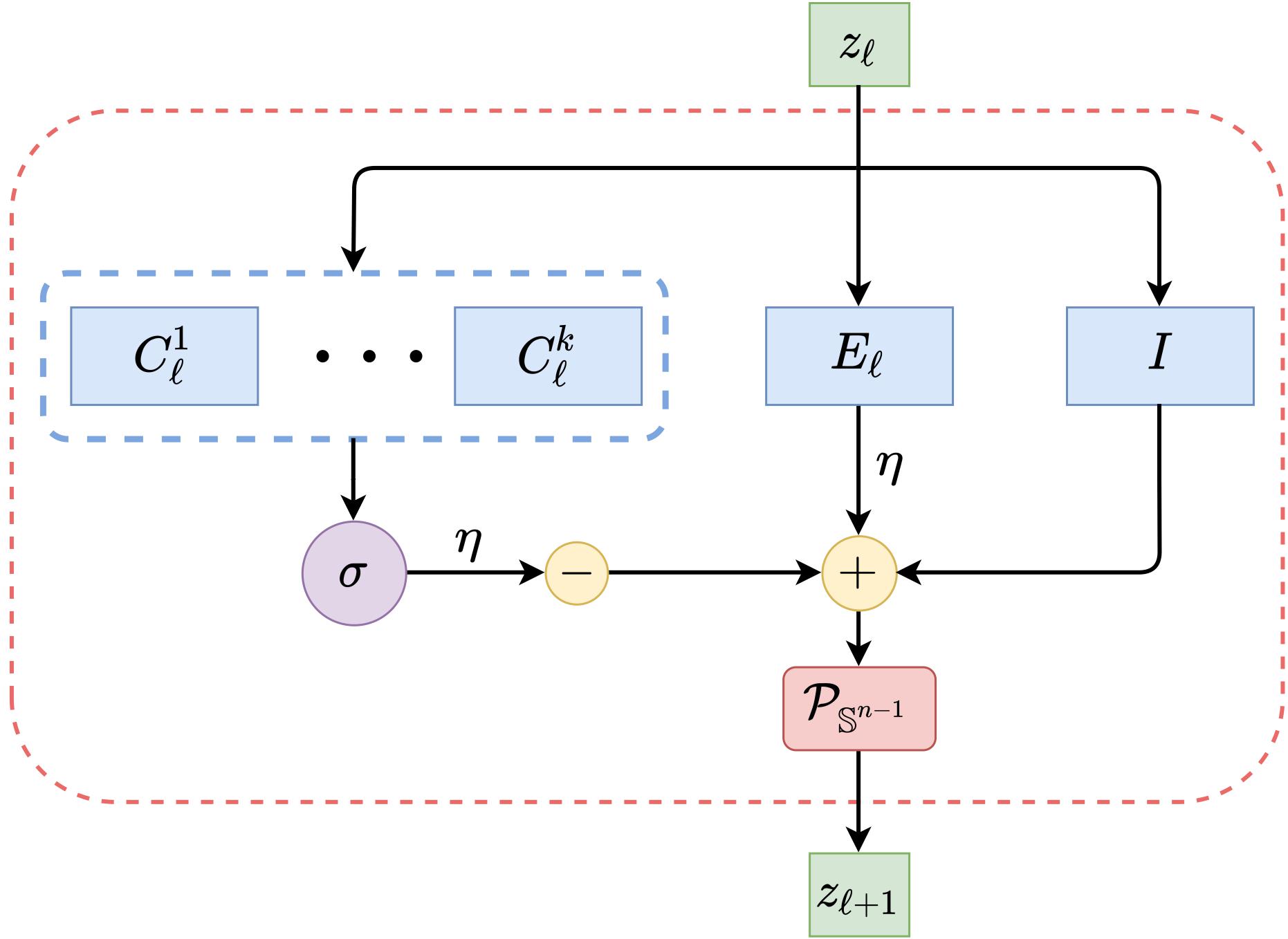This repository is the official PyTorch implementation of the paper ReduNet: A White-box Deep Network from the Principle of Maximizing Rate Reduction (2021)
by Kwan Ho Ryan Chan* (UC Berkeley), Yaodong Yu* (UC Berkeley), Chong You* (UC Berkeley), Haozhi Qi (UC Berkeley), John Wright (Columbia University), and Yi Ma (UC Berkeley).
ReduNet is a deep neural network construcuted naturally by deriving the gradients of the Maximal Coding Rate Reduction (MCR2) [1] objective. Every layer of this network can be interpreted based on its mathematical operations and the network collectively is trained in a feed-forward manner only. In addition, by imposing shift invariant properties to our network, the convolutional operator can be derived using only the data and MCR2 objective function, hence making our network design principled and interpretable.

Figure: Weights and operations for one layer of ReduNet
[1] Yu, Yaodong, Kwan Ho Ryan Chan, Chong You, Chaobing Song, and Yi Ma. "Learning diverse and discriminative representations via the principle of maximal coding rate reduction" Advances in Neural Information Processing Systems 33 (2020).
This codebase is written for python3. To install necessary python packages, run conda create --name redunet_official --file requirements.txt.
For a quick demonstration of ReduNet on Gaussian 2D or 3D cases, please visit the notebook by running one of the two commands:
$ jupyter notebook ./examples/gaussian2d.ipynb
$ jupyter notebook ./examples/gaussian3d.ipynb
The design of this repository aims to be easy-to-use and easy-to-intergrate to the current framework of your experiment, as long as it uses PyTorch. The ReduNet object inherents from nn.Sequential, and layers ReduLayers, such as Vector, Fourier1D and Fourier2D inherent from nn.Module. Loss functions are implemented in loss.py. Architectures and Dataset options are located in load.py file. Data objects and pre-set architectures are loaded in folders dataset and architectures. Feel free to add more based on the experiments you want to run. We have provided basic experiment setups, located in train_<mode>.py and evaluate_<mode>.py, where <mode> is the type of experiment. For utility functions, please check out functional.py or utils.py. Feel free to email us if there are any issues or suggestions.
To train a ReduNet using forward construction, please checkout train_forward.py. For evaluating, please checkout evaluate_forward.py. For example, to train on 40-layer ReduNet on MNIST using 1000 samples per class, run:
$ python3 train_forward.py --data mnistvector --arch layers50 --samples 1000
After training, you can evaluate the trained model using evaluate_forward.py, by running:
$ python3 evaluate_forward.py --model_dir ./saved_models/forward/mnistvector+layers50/samples1000
, which will evaluate using all available training samples and testing samples. For more training and testing options, please checkout the file train_forward.py and evaluate_forward.py.
For code used to generate experimental empirical results listed in our paper, please visit our other repository: https://github.com/ryanchankh/redunet_paper
For technical details and full experimental results, please check the paper. Please consider citing our work if you find it helpful to yours:
@article{chan2021redunet,
title={ReduNet: A White-box Deep Network from the Principle of Maximizing Rate Reduction},
author={Chan, Kwan Ho Ryan and Yu, Yaodong and You, Chong and Qi, Haozhi and Wright, John and Ma, Yi},
journal={arXiv preprint arXiv:2105.10446},
year={2021}
}
- This README is formatted based on paperswithcode.
- Feel free to post issues via Github.
Please contact ryanchankh@berkeley.edu and yyu@eecs.berkeley.edu if you have any question on the codes.